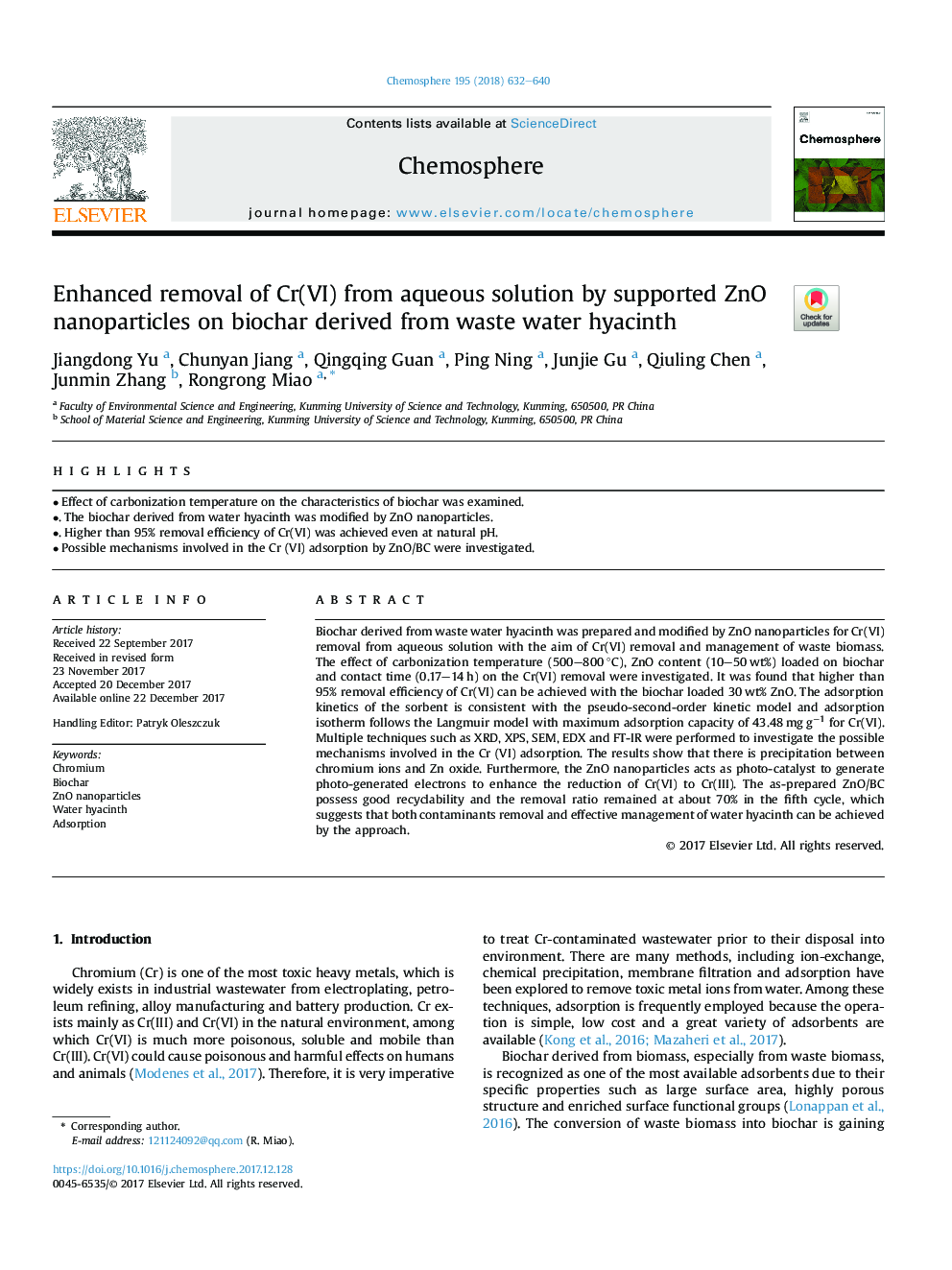| Article ID | Journal | Published Year | Pages | File Type |
|---|---|---|---|---|
| 8852342 | Chemosphere | 2018 | 9 Pages |
Abstract
Biochar derived from waste water hyacinth was prepared and modified by ZnO nanoparticles for Cr(VI) removal from aqueous solution with the aim of Cr(VI) removal and management of waste biomass. The effect of carbonization temperature (500-800â¯Â°C), ZnO content (10-50â¯wt%) loaded on biochar and contact time (0.17-14â¯h) on the Cr(VI) removal were investigated. It was found that higher than 95% removal efficiency of Cr(VI) can be achieved with the biochar loaded 30â¯wt% ZnO. The adsorption kinetics of the sorbent is consistent with the pseudo-second-order kinetic model and adsorption isotherm follows the Langmuir model with maximum adsorption capacity of 43.48â¯mgâ¯gâ1 for Cr(VI). Multiple techniques such as XRD, XPS, SEM, EDX and FT-IR were performed to investigate the possible mechanisms involved in the Cr (VI) adsorption. The results show that there is precipitation between chromium ions and Zn oxide. Furthermore, the ZnO nanoparticles acts as photo-catalyst to generate photo-generated electrons to enhance the reduction of Cr(VI) to Cr(III). The as-prepared ZnO/BC possess good recyclability and the removal ratio remained at about 70% in the fifth cycle, which suggests that both contaminants removal and effective management of water hyacinth can be achieved by the approach.
Related Topics
Life Sciences
Environmental Science
Environmental Chemistry
Authors
Jiangdong Yu, Chunyan Jiang, Qingqing Guan, Ping Ning, Junjie Gu, Qiuling Chen, Junmin Zhang, Rongrong Miao,
